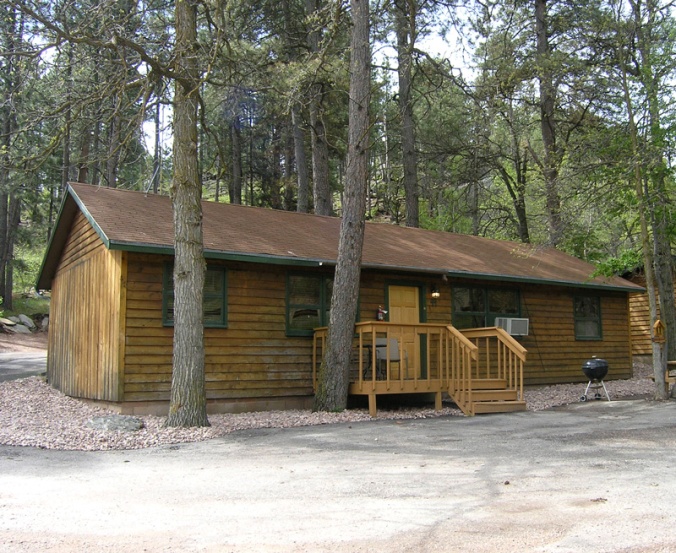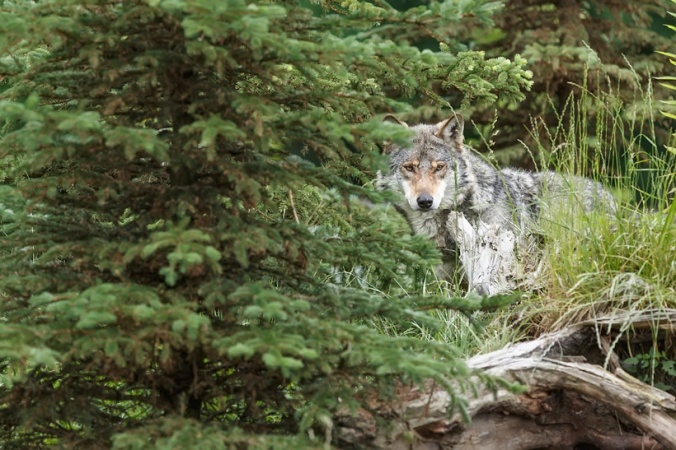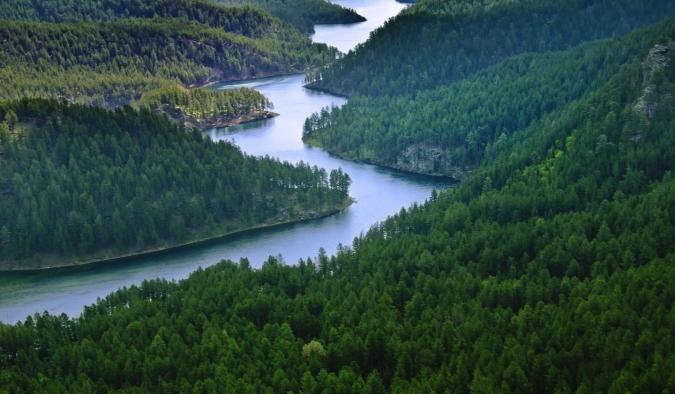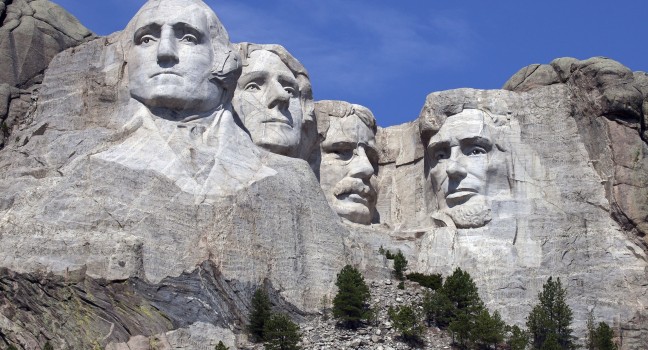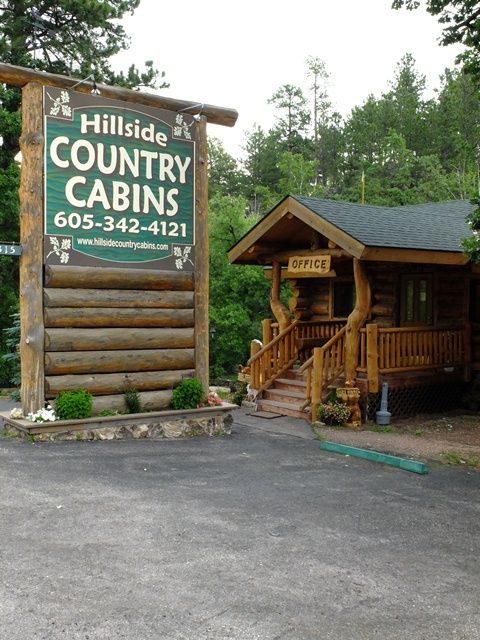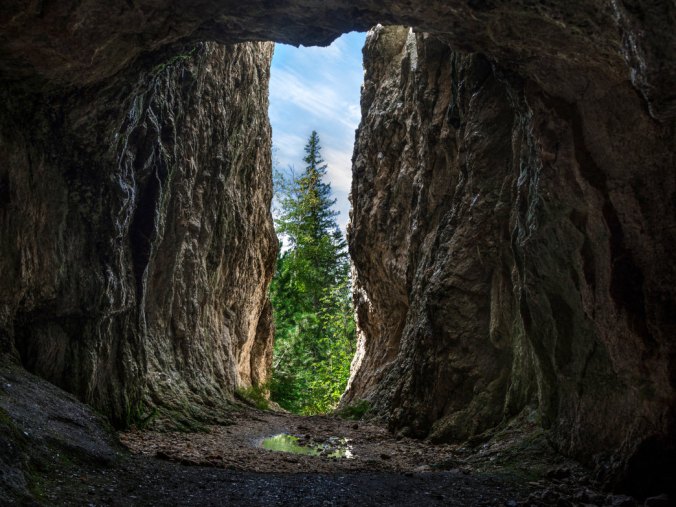
Picking the best Black Hills hikes is hard, really hard. Because the landscape of the Black Hills offers different regions, the trails are quite different—you may find yourself walking through grasslands, crossing creeks, traversing pine forests, or scrambling over boulders. All of the trails offer jaw-dropping views and interesting features, and many have historic significance.
While there are a whopping 450 miles of trails in the Black Hills to explore, here are 10 not-to-be-missed routes to at least get you started.
1. Sunday Gulch Trail
The Sunday Gulch Trail is a 4-mile loop that begins behind the famed outlets near Sylvan Lake. At the beginning, you will traverse over large boulders down a valley. Large spires of granite frame views all the way to the northern Black Hills. Don’t let the handrails and stairs fool you into thinking this trail is easy. It would be challenging to get down the valley without them.
2. Crow Peak
Crow Peak is a 7.7 mile out-and-back hike located to the west of the northern Black Hills in the town of Spearfish. You will be rewarded with views of the Black Hills and the prairies to the east, including a great view of Bear Butte State Park. Take a summit selfie with the elevation sign at the top then head back down to the brewery that shares a name with the peak.
3. Flume Trail
The Flume Trail stretches between Storm Mountain and Sheridan Lake, which both offer outdoor activities of their own. This trail has been designated a National Recreation Trail and the recognition is well-deserved. During the 1880s, the trail carried water from Sheridan Lake to the placer mines near Rockerville. Today, historic tunnels and parts of the flume are still visible. This is an 11-mile trail (22 miles out and back) and has an additional 3-mile loop that can be added on as well.
4. Horsethief Trail
Horsethief Trail, situated behind Horsethief Lake, is a mountain wonderland. A hike back here makes you feel like you’re in the Pacific Northwest. Along this 3.5-mile trail you will find waterfalls, granite spires, mossy boulders, and Old Man’s Beard dripping off some of the largest trees in the Black Hills.
5. Bear Butte State Park
Bear Butte, or “mato paha” in Lakota, rises out of the prairie 1,251 feet. The mountain is historically and prehistorically significant. Bear Butte is an igneous intrusion, essentially a volcano that never erupted. Artifacts that date back around 10,000 years have been found on the mountain. On a clear day, you can see four states from the 4,426-foot summit. Along the way, you will notice Native American prayer flags. Don’t disturb these, as the mountain is sacred.
The Summit Trail is a 1.85-mile hike one-way and follows along the Centennial Trail. The hike can be a bit steep and strenuous in places, but the views from the top are well worth the work.
6. Cathedral Spires
The Cathedral Spires Trail is a 1.6-mile, out-and-back that is commonly used as an approach to some of the best climbing in the Black Hills. The trail leads to Cathedral Spires, or “The Spires” as locals call them. Wandering around amongst the spires, you’ll be amazed by the geology that formed the Black Hills. Look south and views of Custer State Park and the prairie beyond it will leave you inspired. The trail also connects to the trail to Black Elk Peak and Little Devil’s Tower trails.
7. Lover’s Leap
Nestled in Custer State Park, the 3-mile Lover’s Leap trail offers views of Cathedral Spires, Black Elk Peak, and Mount Coolidge. According to folklore, a Native American woman and her lover jumped to their deaths from the summit of this hike. The trail follows a ridgeline and then descends. The route will challenge even experienced hikers with multiple creek crossings.
8. Centennial Trail
There are two trails over 100 miles in the Black Hills, but the 111-mile Centennial is a classic for more advanced hikers and backpackers. The trail spans from Bear Butte State Park in the north to Wind Cave National Park in the southern hills. Depending on where you pick up the trail, the landscapes are vastly different and you will find yourself covering prairie grasslands over the mountainous region of the Black Hills, and along many creeks and streams. There are plenty of opportunities to camp along the way, but many campgrounds require reservations so be sure to plan ahead.
9. Black Elk Peak
A list of the best hikes in the Black Hills wouldn’t be complete without mentioning Black Elk Peak. At 7,242 feet, this is the highest point east of the Rockies in the United States. In Lakota, the mountain is called “hinhan kaga.” The prominence is the site where Lakota leader and medicine man Black Elk received his vision, detailed in the famous book Black Elk Speaks . The peak was used as a fire lookout tower from the early 1900s until 1967.
Like many other historical buildings around the Black Hills, the fire tower was constructed by the Civilian Conservation Corps in the 1930s. Today, Black Elk Peak is used by adventurous locals and travelers alike and is one of the more popular hikes. The summit can be reached from Sylvan Lake to the south or from Willow Creek to the north. If you’re looking for solitude and a moderate hike, Black Elk Peak Trail #9 (may still be labeled as Harney Peak Trail #9) from the north is for you. You can also link up a hike to the summit of Little Devil’s Tower if you’re up for more of a challenge.
10. Little Devil’s Tower
At 3.1 miles out and back, Little Devil’s Tower isn’t nearly as long as the hike up South Dakota’s highest point, Black Elk Peak, but the payoff is equally rewarding. The views of Black Elk Peak and Cathedral Spires, as well as the Black Hills and the prairie surrounding the mountains cap off the short hike perfectly.
To start, you will make your way through sub-alpine valleys and along switchbacks that wrap around granite boulders. Unlike the other trails that have been adapted for any level of hiker, a Class 3 scramble to reach the top of Little Devil’s Tower makes this one every bit as rewarding as the other, longer hikes.
